本期为大家推荐的内容为论文《Neighborhood infrastructure-related risk factors and non-communicable diseases: a systematic meta-review》(社区基础设施相关的风险因素对慢性非传染性疾病的影响:系统性元综述),发表在Environmental Health期刊,欢迎大家学习与交流。
背景介绍
随着快速的城市化进程,城市环境,特别是社区环境,在全球范围已经受到越来越多的关注。然而,由于大量的社区风险因素与人类健康的关系的存在,对社区风险因素与人类健康的关系的全面概述仍较少。
方法
在一整年工作组讨论的基础上,我们首先总结了一份包括5个社区环境的清单,共33个统一定义的社区风险因素。我们只关注有可能通过城市设计工具进行空间干预的街区基础设施相关风险因素。随后,按照系统综述和元分析的首选报告项目(PRISMA)指南,利用2000年1月至2021年5月的四个数据库Web of Science、PubMed、OVID和Cochrane图书馆,对33个社区风险因素中的17个基础设施相关风险因素(如绿色和蓝色空间、靠近主要道路和靠近垃圾填埋场)进行了系统性元综述,并综合了慢性非传染性疾病(NCDs)的相应证据。评审质量是根据系统评审评估工具(AMSTAR)标准进行评估的。
结果
分析中包括了33篇中等和高质量的评论。发现13个主要的非传染性疾病结果与社区基础设施相关的风险因素有关。绿色和蓝色空间及步行能力对人类健康有保护作用。相反,靠近主要道路、工业和垃圾填埋场则对人类健康构成严重威胁。四个社区风险因素的健康作用结果不一致:体育和休闲活动的设施、提供不健康食品的基础设施的可达性、靠近工业和靠近主要道路。
结论
本系统性元综述全面介绍了社区基础设施相关风险因素对NCDs的影响。对具有强有力证据的风险因素的研究结果有助于改善健康城市指南,促进城市的可持续性。此外,许多社区风险因素与某些类型的非传染性疾病之间存在未知或不确定的联系,需要进一步研究。


题目:Neighborhood infrastructure-related risk factors and non-communicable diseases: a systematic meta-review
(社区基础设施相关的风险因素对慢性非传染性疾病的影响:系统性元综述)
作者:Yuyang Zhang, Ningrui Liu, Yan Li, Ying Long*, Jill Baumgartner, Gary Adamkiewicz, Kavi Bhalla, Judith Rodriguez and Emily Gemmell
发表刊物:
Environmental Health
URL:
https://ehjournal.biomedcentral.com/articles/10.1186/s12940-022-00955-8
DOI:10.1186/512940-022-00955-8
摘要ABSTRACT
Background
With rapid urbanization, the urban environment, especially the neighborhood environment, has received increasing global attention. However, a comprehensive overview of the association between neighborhood risk factors and human health remains unclear due to the large number of neighborhood risk factor–human health outcome pairs.
Method
On the basis of a whole year of panel discussions, we frst obtained a list of 5 neighborhood domains, containing 33 uniformly defned neighborhood risk factors. We only focused on neighborhood infrastructure-related risk factors with the potential for spatial interventions through urban design tools. Subsequently, following the Preferred Reporting Items for Systematic Reviews and Meta-Analyses (PRISMA) guidelines, a systematic meta-review of 17 infrastructure-related risk factors of the 33 neighborhood risk factors (e.g., green and blue spaces, proximity to major roads, and proximity to landflls) was conducted using four databases, Web of Science, PubMed, OVID, and Cochrane Library, from January 2000 to May 2021, and corresponding evidence for non-communicable diseases (NCDs) was synthesized. The review quality was assessed according to the A MeaSurement Tool to Assess Systematic Reviews (AMSTAR) standard.
Results
Thirty-three moderate-and high-quality reviews were included in the analysis. Thirteen major NCD outcomes were found to be associated with neighborhood infrastructure-related risk factors. Green and blue spaces or walkability had protective efects on human health. In contrast, proximity to major roads, industry, and landflls posed serious threats to human health. Inconsistent results were obtained for four neighborhood risk factors: facilities for physical and leisure activities, accessibility to infrastructure providing unhealthy food, proximity to industry, and proximity to major roads.
Conclusions
This meta-review presents a comprehensive overview of the efects of neighborhood infrastructurerelated risk factors on NCDs. Findings on the risk factors with strong evidence can help improve healthy city guidelines and promote urban sustainability. In addition, the unknown or uncertain association between many neighborhood risk factors and certain types of NCDs requires further research.


Table 5. Summary of strong and medium evidence from the included reviews.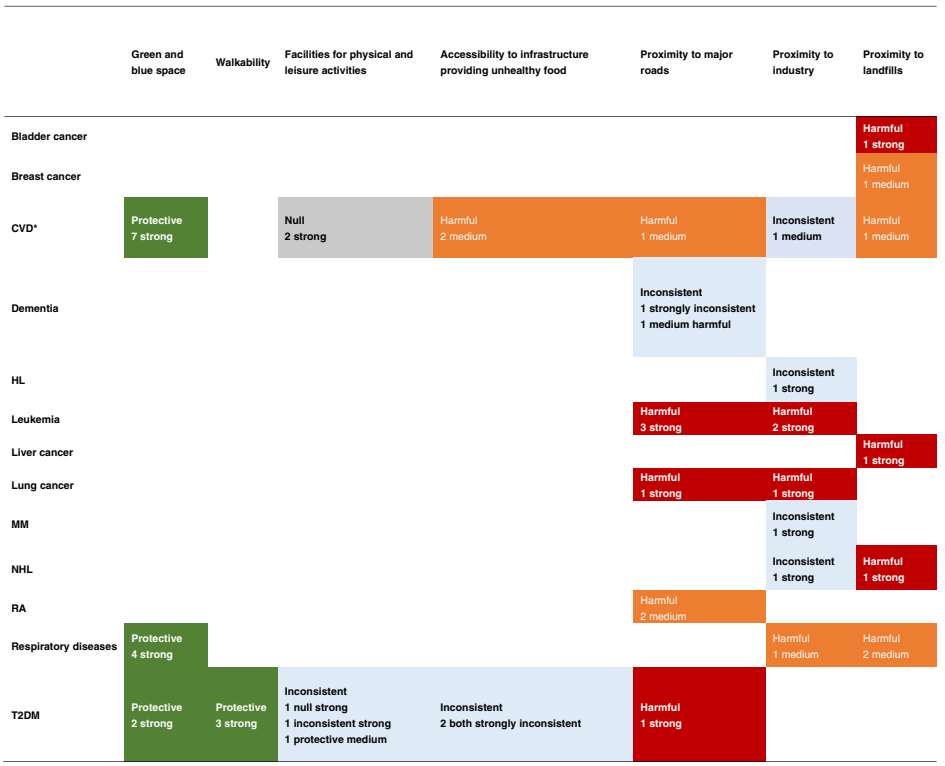
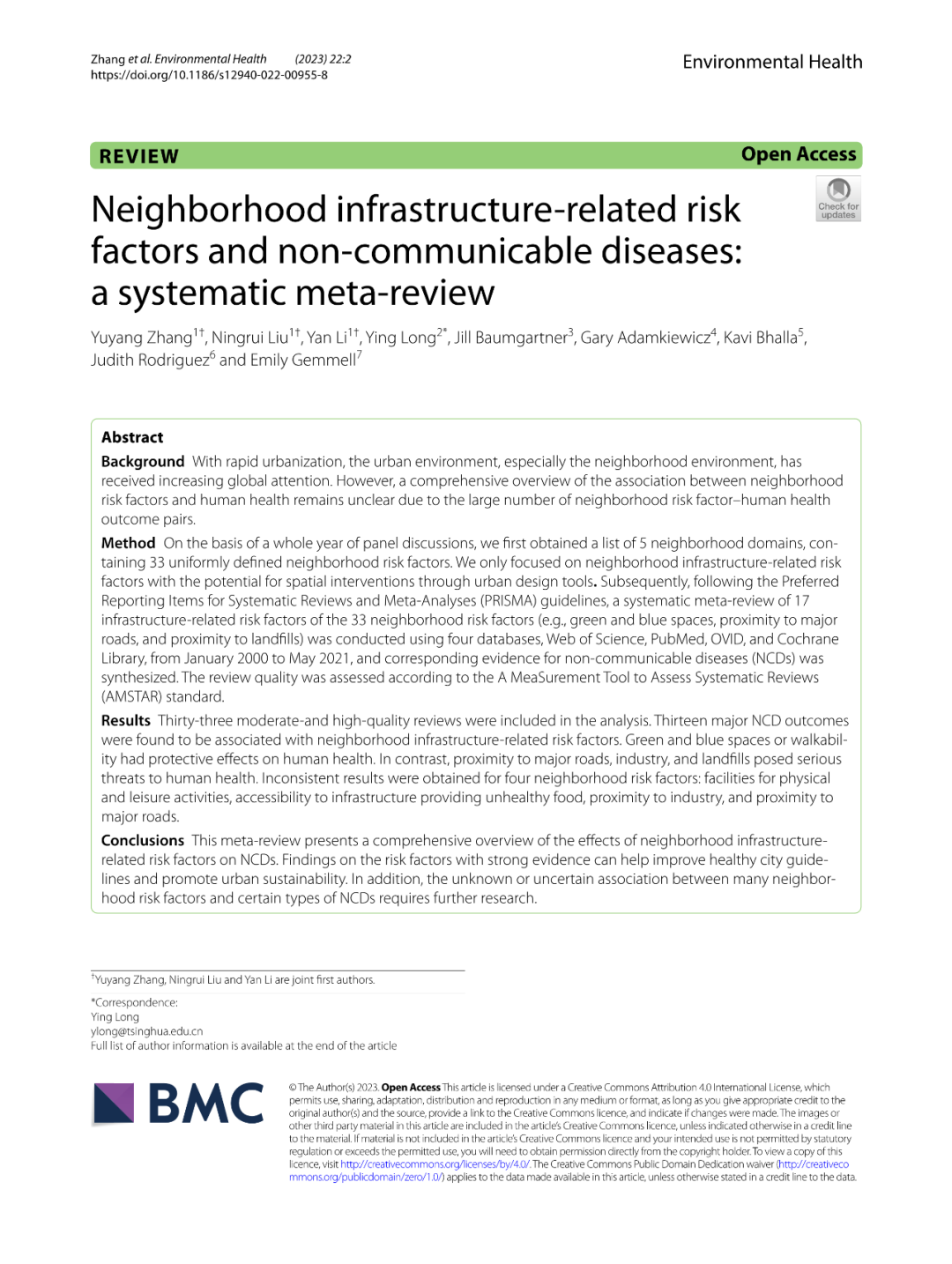
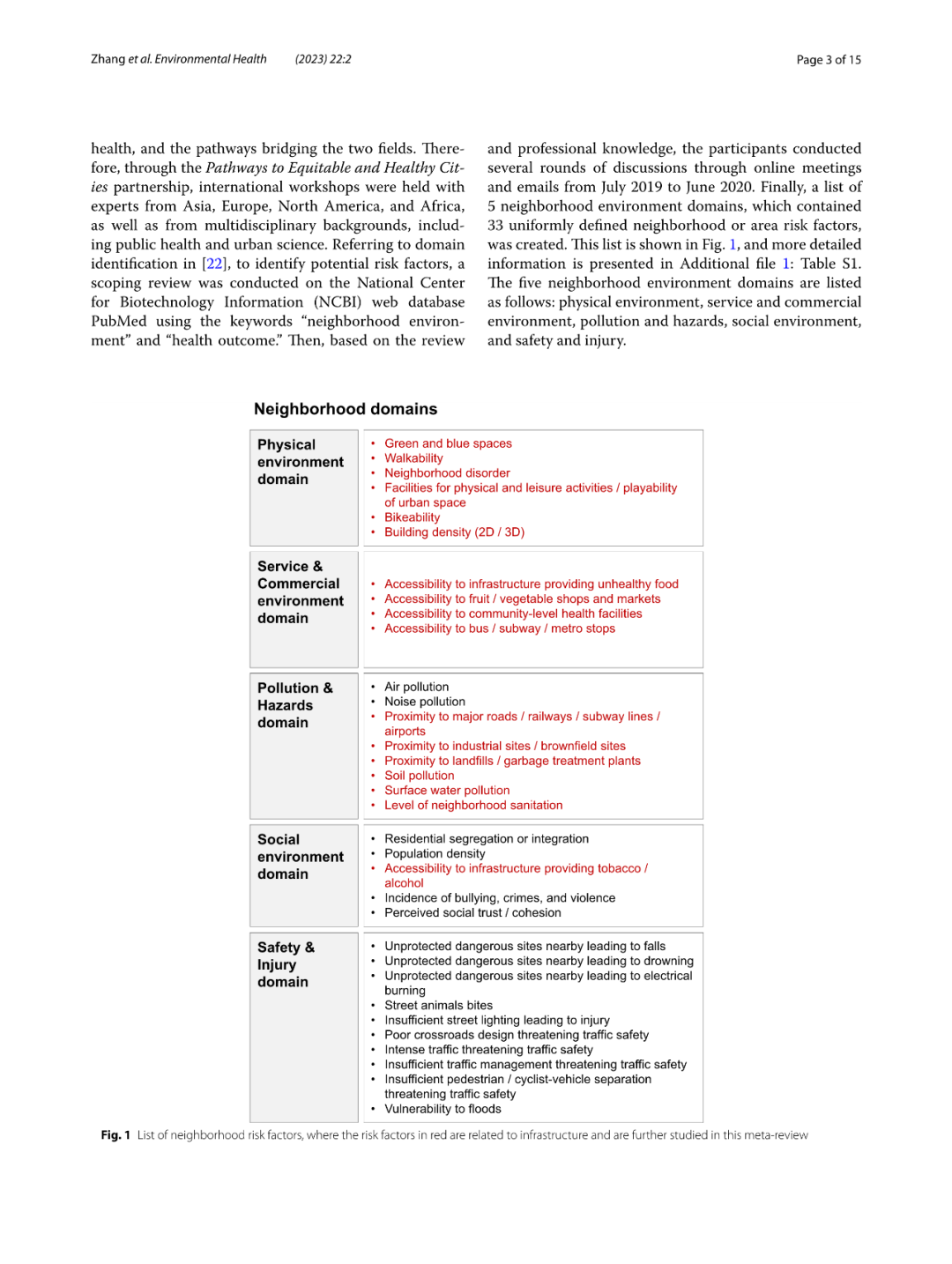
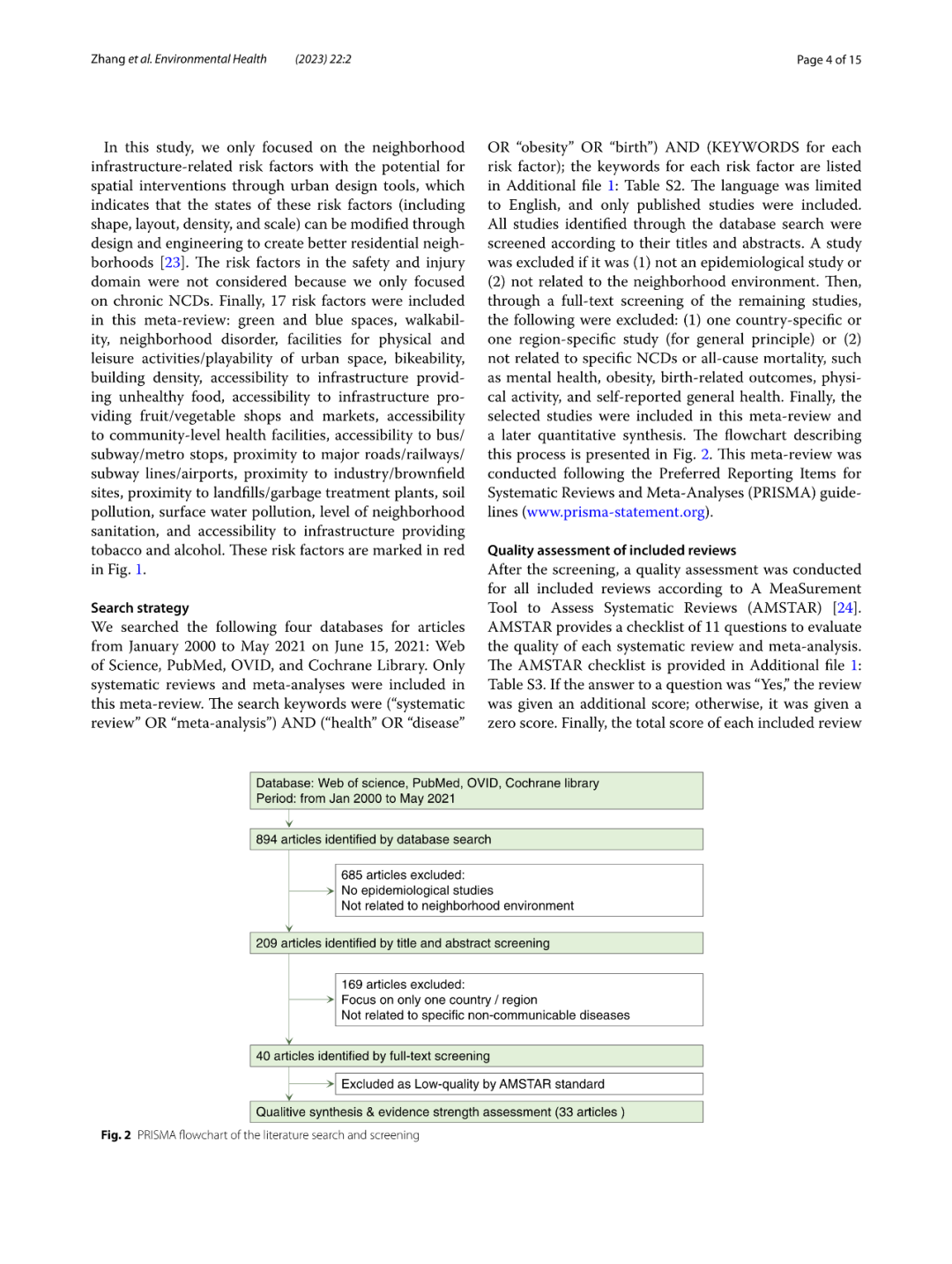
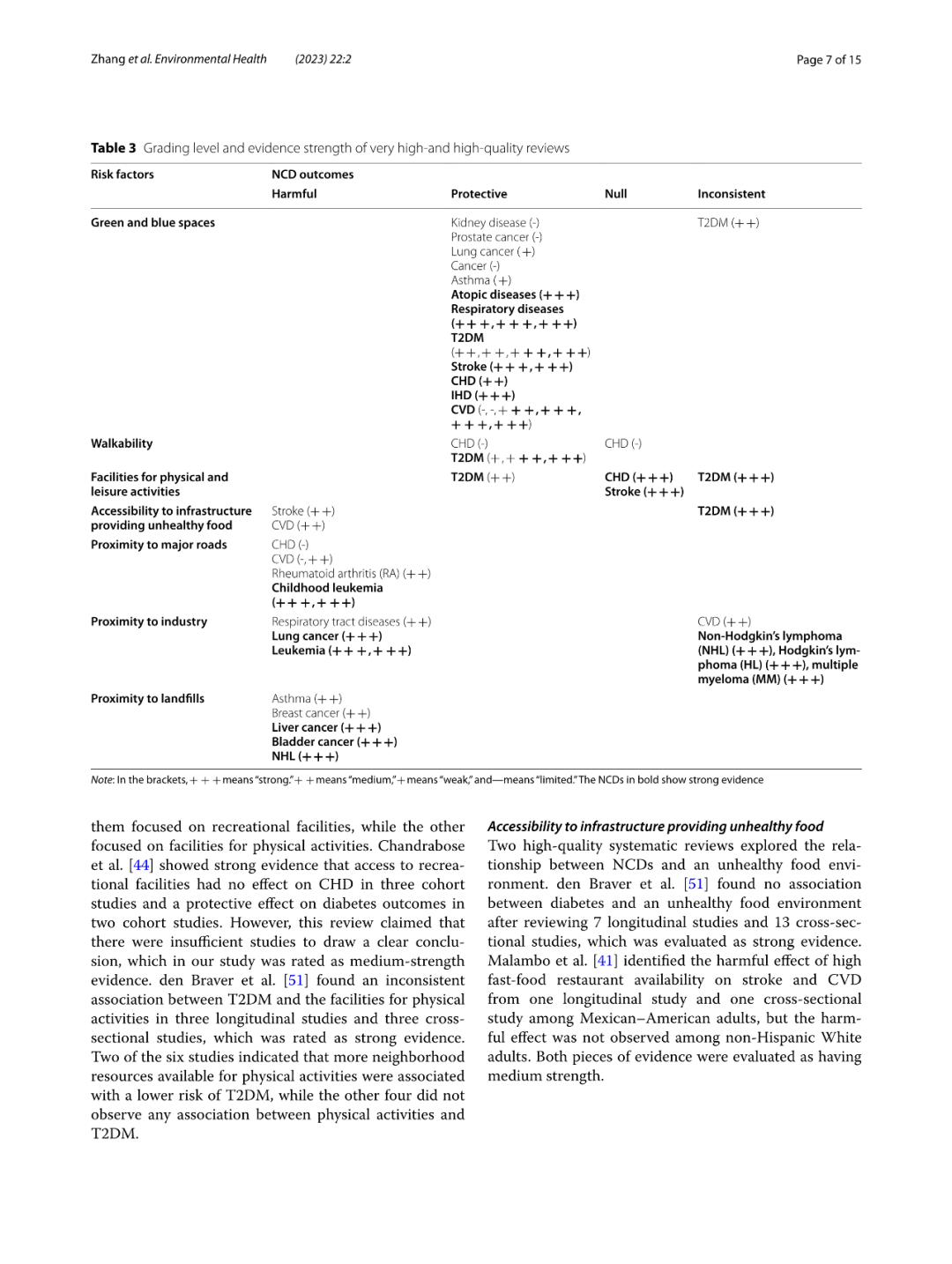
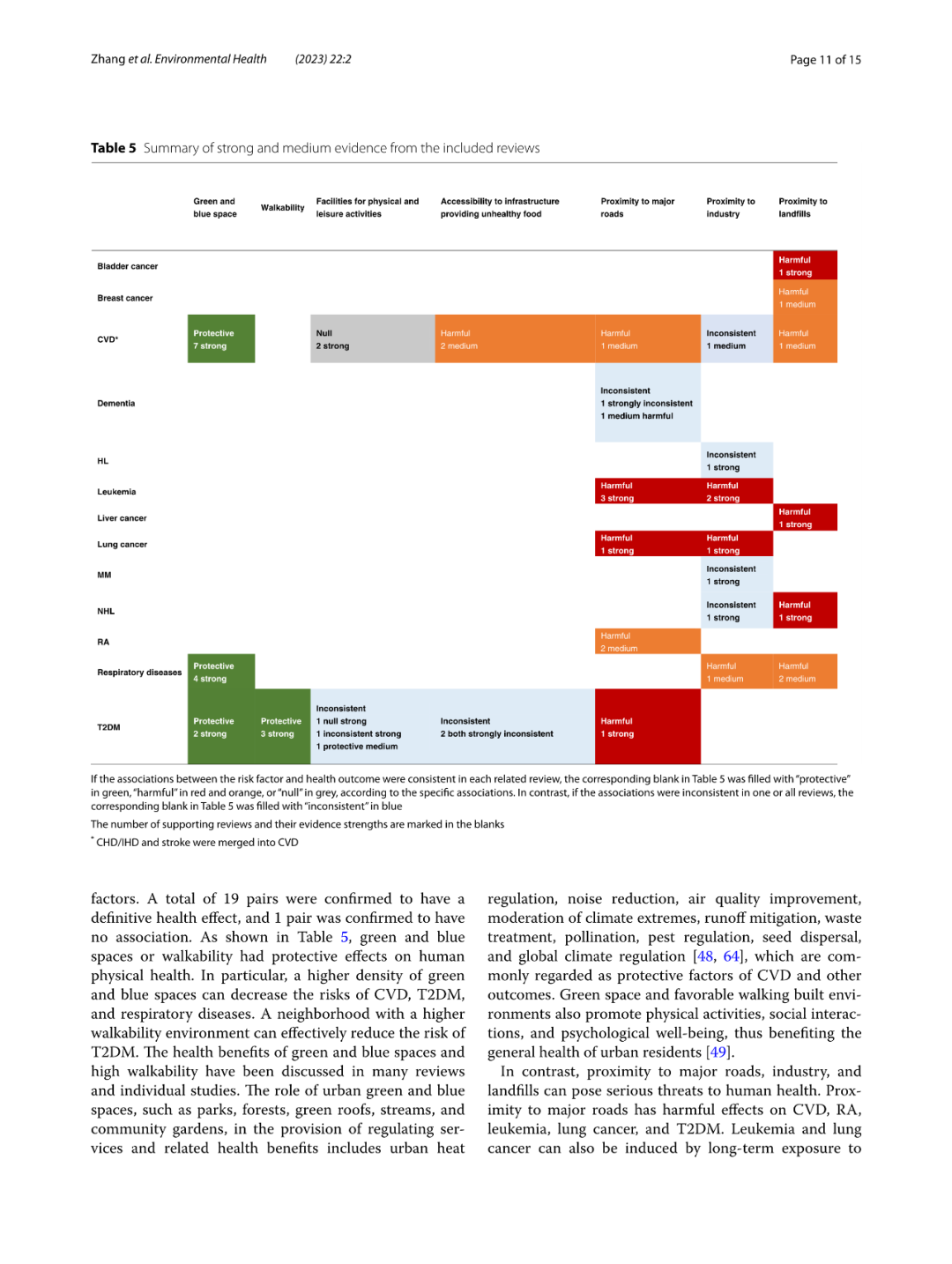
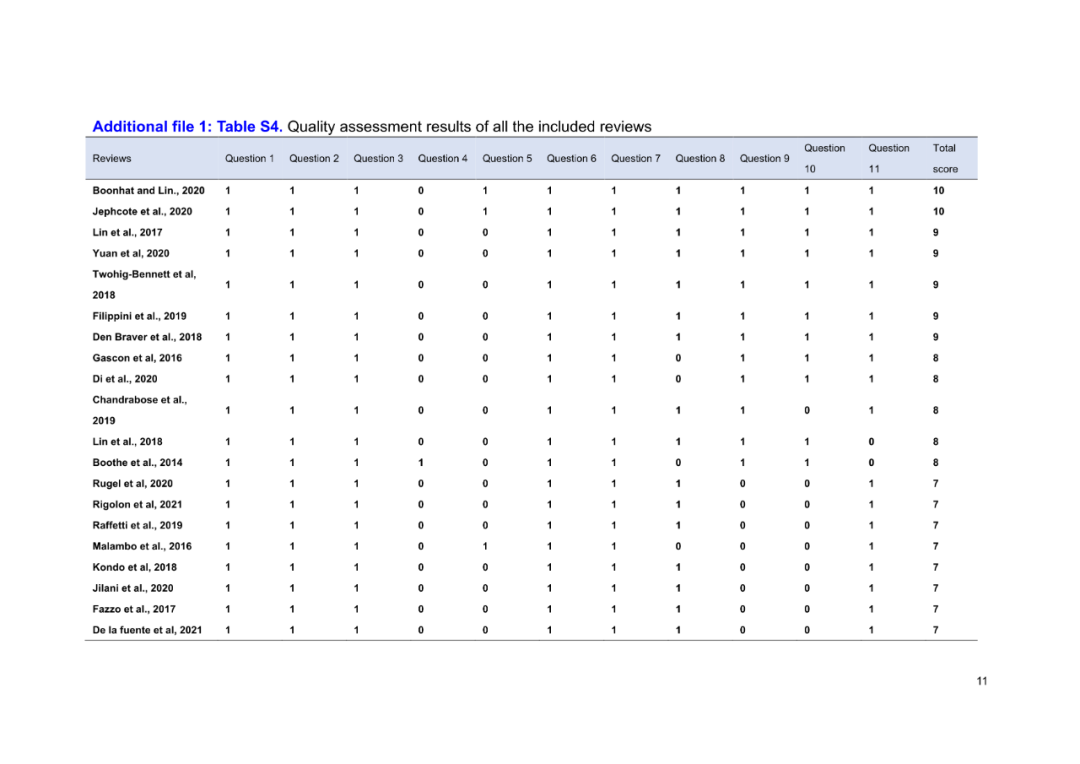
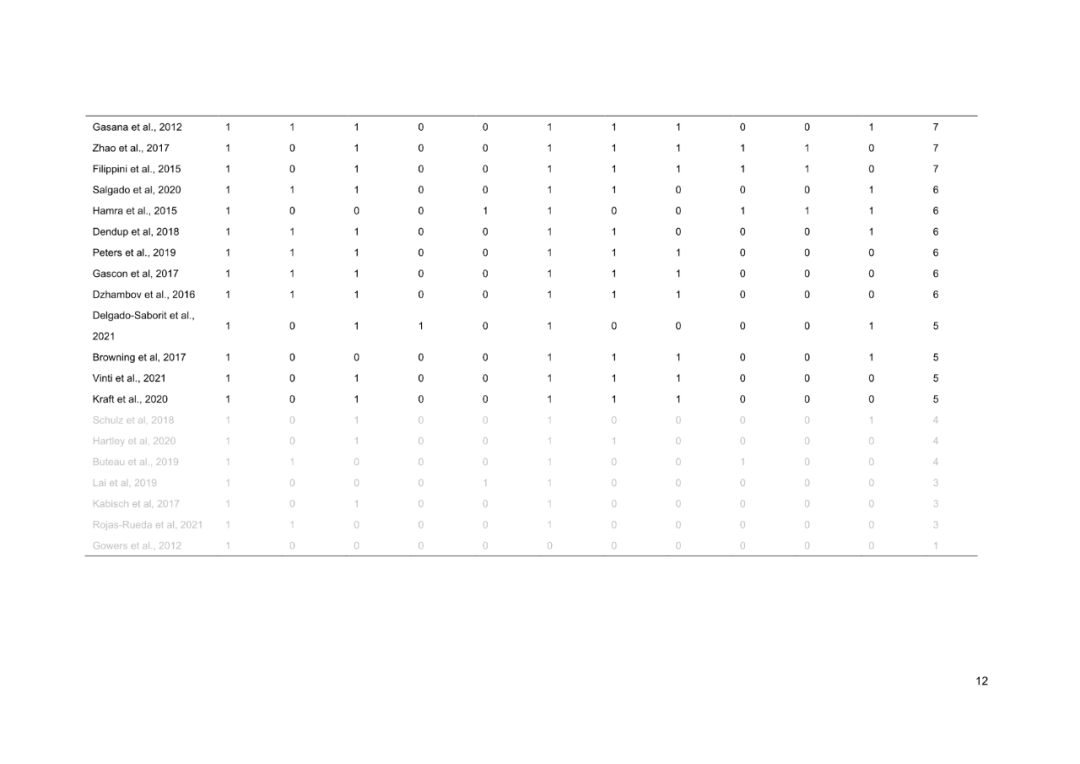
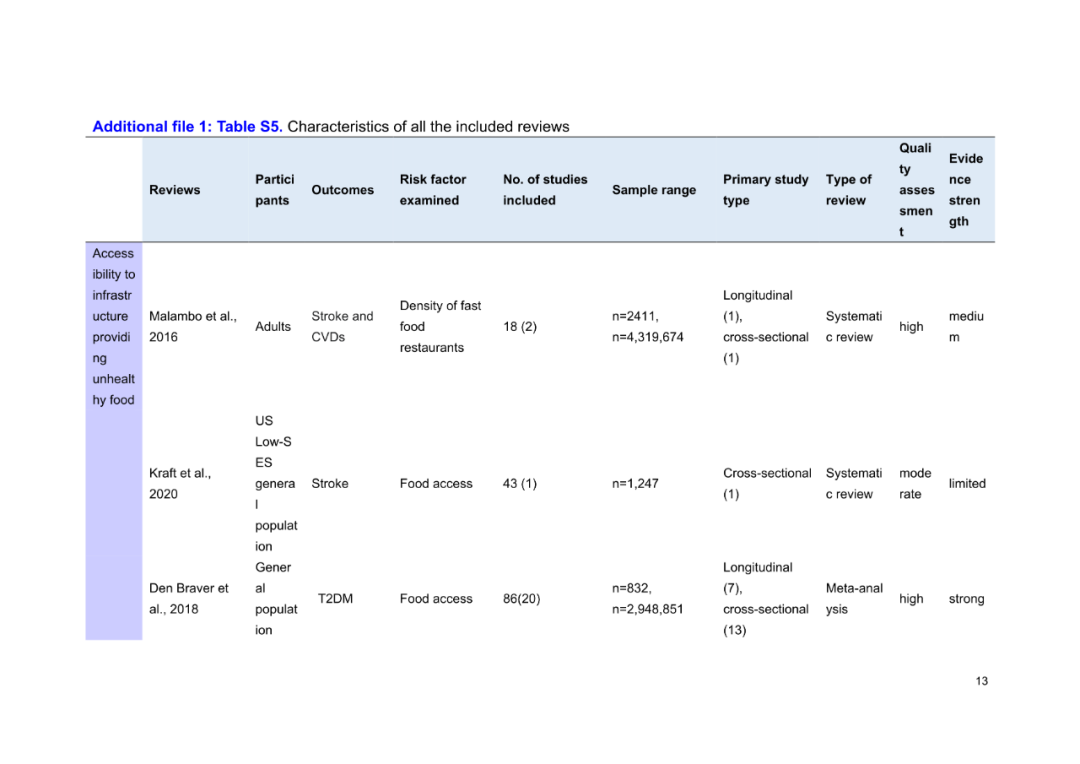
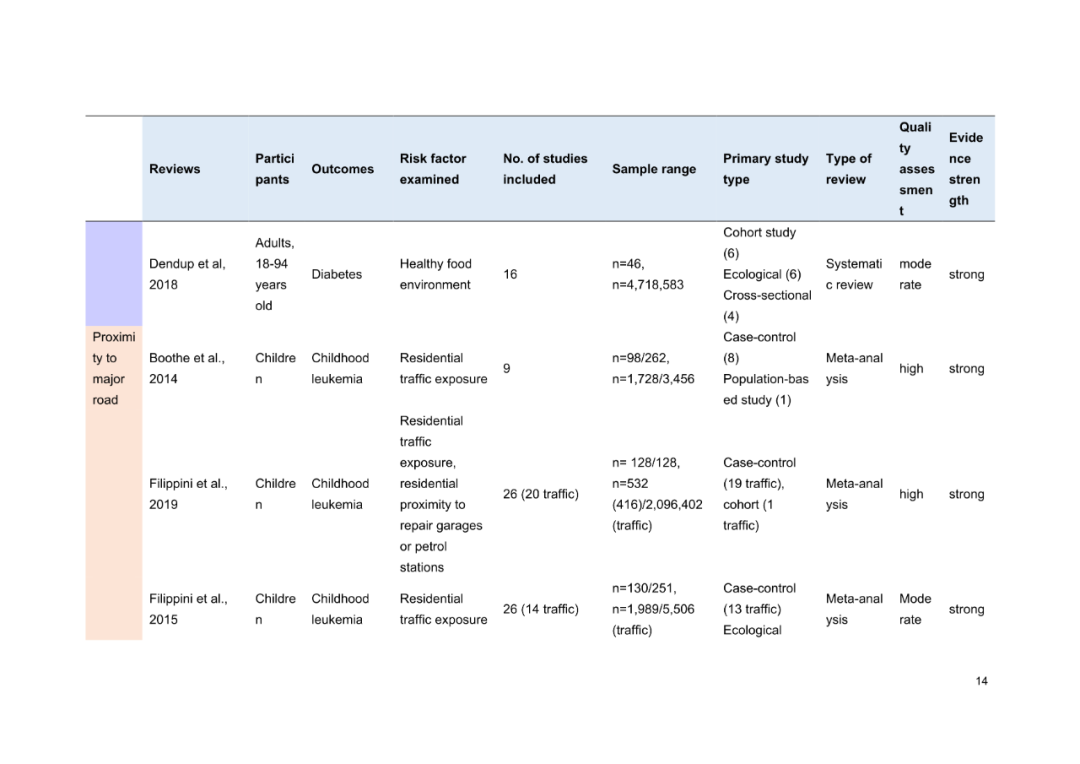

研究全文以及更多相关的研究工作详见BCL的【Healthy Cities】单元链接:
https://www.beijingcitylab.com/projects-1/34-healthy-cities/
(复制至浏览器搜索或点击文末“阅读原文”查看)
BCL北京城市实验室“健康城市” (Healthy Cities)项目还包括《利用出租车轨迹数据回溯就医可达性:以北京急性心肌梗死患者就医为例》等研究内容,欢迎探索。
更多内容,请点击微信下方菜单即可查询。
请搜索微信号“Beijingcitylab”关注。
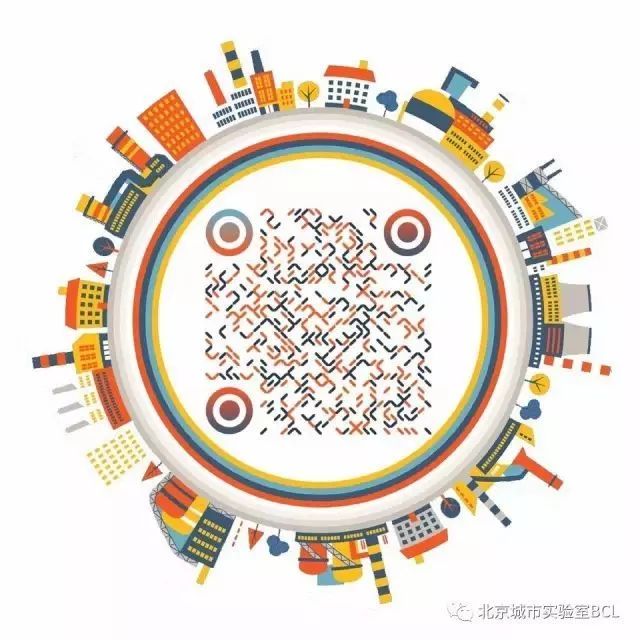
Email:BeijingCityLab@gmail.com
Emaillist: BCL@freelist.org
新浪微博:北京城市实验室BCL
微信号:beijingcitylab
网址: http://www.beijingcitylab.com
责任编辑:张雨洋、张业成
原文始发于微信公众号(北京城市实验室BCL):论文推荐 | 社区基础设施相关的风险因素对慢性非传染性疾病的影响:系统性元综述
 规划问道
规划问道







